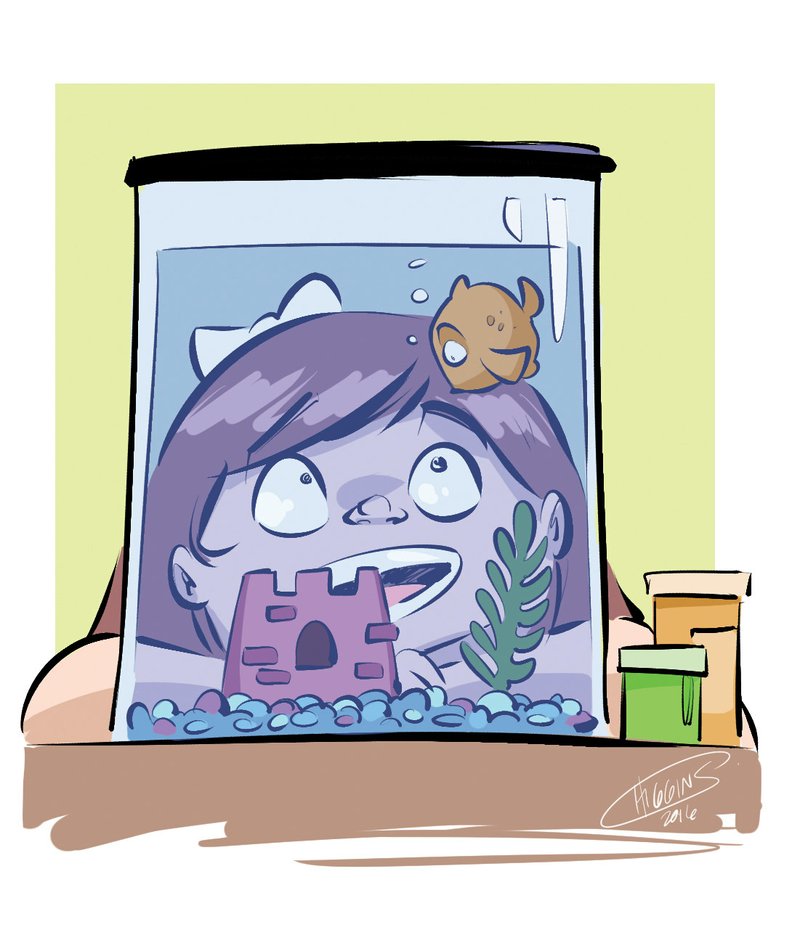There is a fish tank in my daughter's classroom at her elementary school that she likes a lot. Now she wants us to get her some fish for pets. Any suggestions? The only fish I'm familiar with are bettas and goldfish.
Fish can make great starter pets so that children can learn how to be responsible for the care and feeding of a live creature before moving on to more interactive, hands-on pets such as hamsters, cats and dogs.
Some of the pluses of fish as pets, according to healthypets.mercola.com, are that they're fun to watch as well as being clean, quiet and relatively inexpensive. Fish bowls, tanks or aquariums also can be a decorative addition to any room.
When considering fish as a pet, you should decide if you're interested in freshwater fish, cold-water fish or tropical fish. Do some research, talk to other fish owners as well as your daughter's teacher to figure out if you prefer a simple fish bowl with a couple of fish or want a more elaborate setup such as an aquarium with a variety of fish. Keep in mind that the larger the aquarium, the more time and care it will need to be kept clean.
Next, talk with your child about the responsibilities of caring for a new pet. Explain the feeding and cleaning schedules. Fish can't bark or meow to tell us when they're hungry, sick or simply want attention so it's easy to overlook them. Your child needs to understand that just because they won't complain, fish cannot be ignored or overlooked.
Deciding what kind of fish is a good pet is fun, but can be daunting because there are more than 2,000 species of fish that can live in an aquarium. To narrow the list, here's a look at a few fish that pethelpful.com recommends for children, among them betta fish and goldfish. You also might find out what type of fish are in the classroom aquarium.
• Goldfish: These are so common because they're easy to take care of, plus get along well with most other fish. They need fresh water that's kept at a temperature of about 63 degrees. They like places where they can hide and hang out so add a few plants or decorative items -- like a tiny castle -- made for fish bowls. Goldfish generate a lot of waste so their water needs to be changed frequently.
• Betta fish: These are bright, colorful fish that can be lively, but they do not live well with other fish. They'll eat the young of other species, but also aren't always able to get along with other bettas. Known as "fighting fish," two male bettas will fight to the death so you must be sure you do not put two males in a tank together. Most betta fish sold in pet stores are males.
• Guppies: Tiny and peaceful, they get along with most other fish although they are sometimes eaten by bigger fish. They're extroverts and like to socialize with other fish so make sure you get several. Male guppies are colorful while females are usually silver.
• Angelfish: A tropical freshwater fish, the angelfish needs water kept at 76 to 80 degrees, although the exact temperature depends on the type of angelfish you get. You'll need an aquarium heater to keep the temperature constant. Angelfish should have a deeper, wider tank than some of the other fish because they can grow large and need plenty of room to swim. Angelfish also require plants in their water -- not simply because it makes them happy, but because they lay their eggs in plants. These fish can be territorial so they do best as pets in groups of three.
• Molly fish: Popular aquarium denizens, mollies are small, quick and colorful. They live in freshwater tanks but like a bit of salt so be sure and ask about aquarium salt when you buy your fish. There are many types of molly fish, but the most common are the short-finned variety. They come in many hues, including gold, which makes them easy to confuse with goldfish. Mollies are small and get pushed around by other fish so they need plenty of hiding places in their tanks.
Family on 11/16/2016

